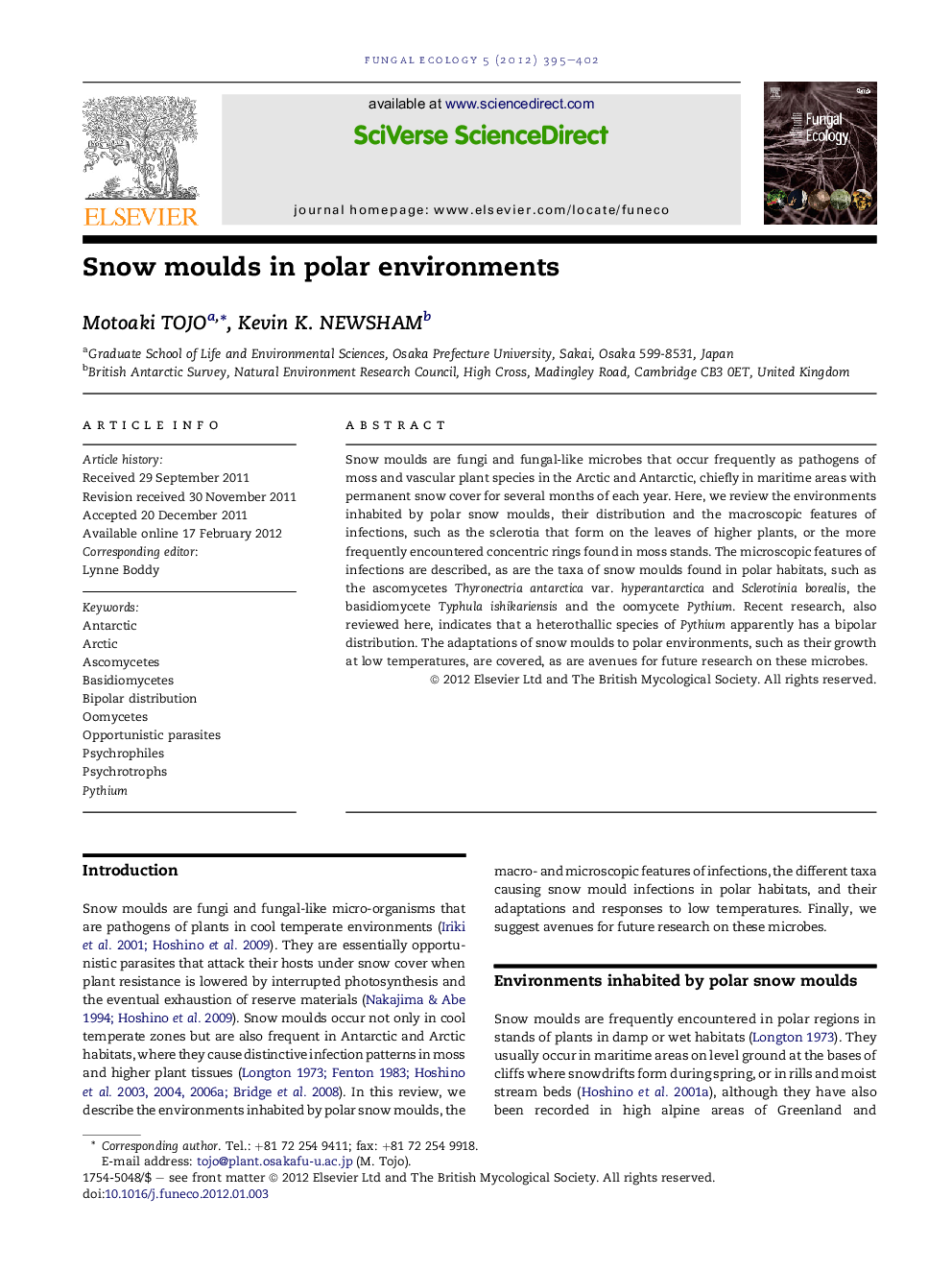| Article ID | Journal | Published Year | Pages | File Type |
|---|---|---|---|---|
| 2054030 | Fungal Ecology | 2012 | 8 Pages |
Snow moulds are fungi and fungal-like microbes that occur frequently as pathogens of moss and vascular plant species in the Arctic and Antarctic, chiefly in maritime areas with permanent snow cover for several months of each year. Here, we review the environments inhabited by polar snow moulds, their distribution and the macroscopic features of infections, such as the sclerotia that form on the leaves of higher plants, or the more frequently encountered concentric rings found in moss stands. The microscopic features of infections are described, as are the taxa of snow moulds found in polar habitats, such as the ascomycetes Thyronectria antarctica var. hyperantarctica and Sclerotinia borealis, the basidiomycete Typhula ishikariensis and the oomycete Pythium. Recent research, also reviewed here, indicates that a heterothallic species of Pythium apparently has a bipolar distribution. The adaptations of snow moulds to polar environments, such as their growth at low temperatures, are covered, as are avenues for future research on these microbes.
► Polar-inhabiting snow moulds include diverse fungi and fungal-like organs. ► They mainly occur in maritime area where high humidity and moist snow cover have. ► The environments inhabited by the snow moulds and their distribution were reviewed. ► The adaptations of snow moulds to polar environments are also covered.
